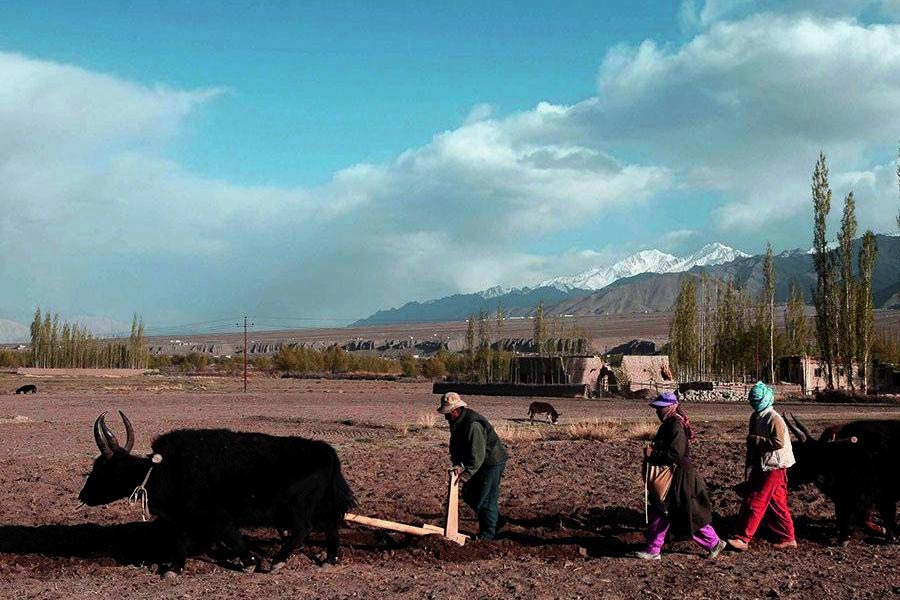Farming in Ladakh is deeply rooted in the region’s history and is practiced using sustainable, organic methods. The primary crops cultivated include barley (nas), wheat, peas, and mustard. Barley, the staple crop, is used to prepare tsampa, a roasted barley flour that has sustained Ladakhis for centuries. Other common crops include potatoes, turnips, buckwheat, and lentils, along with vegetables such as cabbage, radish, and carrots.

Water Management: The Lifeline of Farming
One of the biggest challenges of farming in Ladakh is water scarcity. The region depends on glacial meltwater for irrigation, using traditional water management systems like zings (small reservoirs that store meltwater) and yuras (canals that distribute water to fields). Over the years, innovative solutions like ice stupas, artificial glaciers pioneered by Sonam Wangchuk, have been developed to store water in winter and gradually release it during the growing season.
Modern Innovations in Ladakhi Agriculture
With the advent of climate change and increasing demand for food security, farmers in Ladakh have started integrating modern agricultural techniques alongside their traditional practices.
- Greenhouses and Polyhouses: These structures help extend the growing season, allowing farmers to cultivate fresh vegetables even in winter.
- Hydroponics and Vertical Farming: These soil-less farming techniques are being experimented with in urban areas to produce leafy greens efficiently.
- Organic Farming and Permaculture: Many farmers are shifting towards completely organic methods, avoiding chemical fertilizers and pesticides.
- Agroforestry: Planting poplars and willows helps prevent soil erosion and provides firewood and fodder for livestock.
Challenges Faced by Ladakhi Farmers
Despite their resilience, Ladakh’s farmers face several challenges:
- Short Growing Season: The extreme winters limit farming to just 4-5 months a year.
- Climate Change: Melting glaciers threaten the region’s water supply.
- Soil Erosion and Land Degradation: Strong winds and lack of vegetation make the soil vulnerable.
- Market Access: Transporting farm produce to markets outside Ladakh is costly and difficult.
The Future of Farming in Ladakh
The future of agriculture in Ladakh lies in a combination of traditional wisdom and scientific innovation. Several government schemes and local initiatives support organic farming and sustainable water management. Additionally, farm tourism is emerging as an alternative income source, where visitors get to experience traditional Ladakhi agriculture firsthand.
As Ladakh continues to evolve, its farmers stand as a symbol of resilience, adapting to modern challenges while preserving their cultural and ecological heritage. Farming in Ladakh is not just about food production—it is a testament to human ingenuity and the deep-rooted connection between people and nature.










You must be logged in to post a comment.